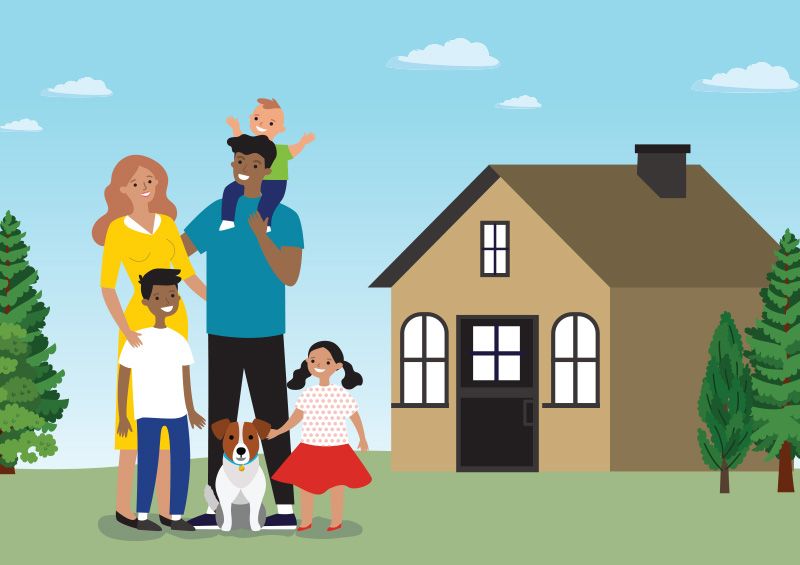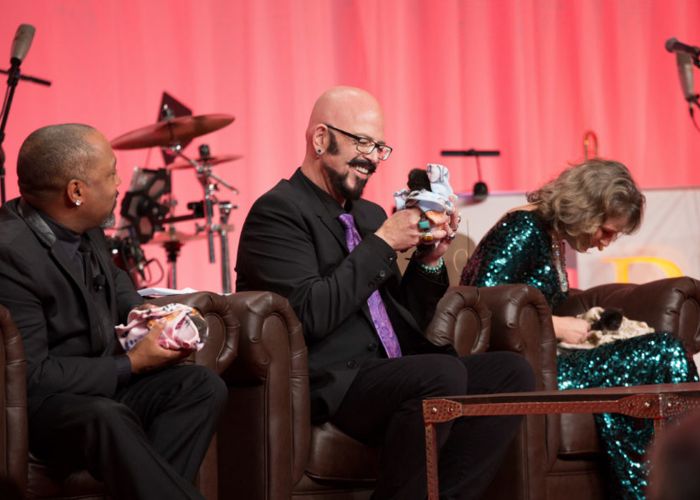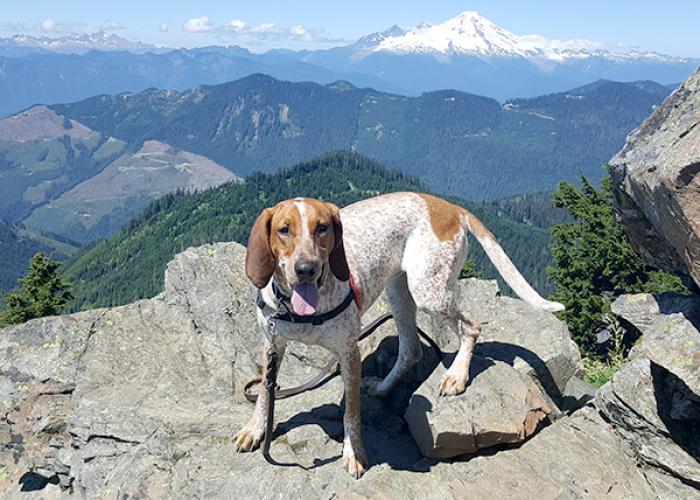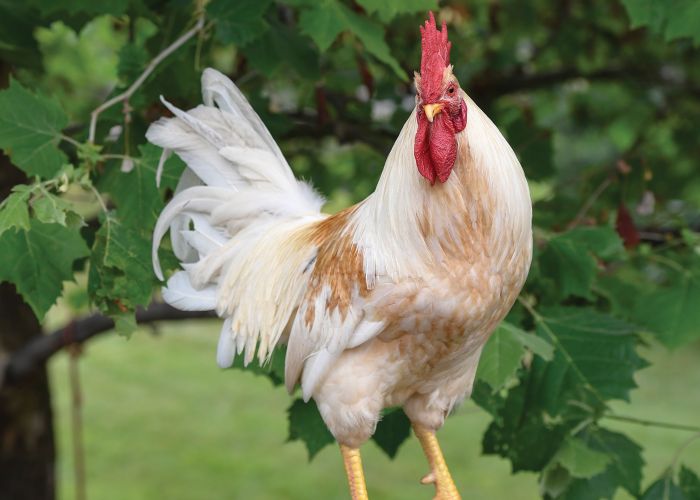Leap of faith
What does it take for us to truly welcome adopters?

The two women working at the shelter were not welcoming. Looking back now, I can’t really blame them.
My best friend, acting impulsively as was her habit back then, had woken up that morning and decided today was the day she was getting a dog. I was along for the ride and to help make the choice.
None of the dogs at the nearest shelter seemed like the right match. So we drove to another, an hour away, and entered the building just before closing time.
We looked like exactly what we were: Two young people, just past their teens, who lived paycheck to paycheck and spent more time partying than planning for the future. My friend and her boyfriend had recently moved out of his parents’ house into a tiny basement apartment. She wanted a dog; he wanted to wait: There was going to be an argument when we returned.
Under the suspicious eyes of the shelter staff, we hurriedly browsed the kennels until we met a 60-pound black-and-gray mutt with a fluffy curl of a tail that never stopped wagging. Within minutes, my friend decided he was the one. The shelter workers pushed back.
The dog’s history provided some clues to their resistance. He’d belonged to students living in a frat house at the local university and had been surrendered when the school year ended. And here we were, two members of the same age demographic that was responsible for the dog being at the shelter.
Of course, I didn’t think of that then. I just saw two people, around my parents’ age, eyeing us with obvious disapproval. I can’t remember what they said to dissuade us, only that eventually, my friend copped an attitude: “Do you want to find homes for these dogs or not?” she snapped.
Tight-lipped and grim, they handed over the paperwork. Twenty minutes later, the dog who would soon be named Jordan was in the car headed to his new home. My friend and I were excited about her new pet, but the experience at the shelter had cast a sour note over the outing. While I sat in the back seat giving reassuring pets to a nervous dog, we spent the return drive complaining about the shelter staff, who we saw as afflicted with horrible personalities and inexplicably crappy attitudes.
A few years later, after I moved to a new town and started volunteering at a local shelter, I’d have a lot more sympathy for them. Suddenly I was the one sizing people up, asking questions, searching for clues to guide me on a decision that triggered all my worst fears: Could I trust the strangers in front of me with the care and happiness of an infinitely precious and vulnerable being?
“I meet people in my own friends circle who … have adopted children and said it was less judgmental.”
—José Ocaño, senior director of people and culture with Best Friends Animal Society
The sum of our fears
It’s a longstanding paradox in animal welfare: We spend enormous resources promoting an “adopt, don’t shop” ethos to the public, yet when people respond to our Petfinder ads or show up at our shelter, our reaction is often a mixture of ambivalence and mistrust. Even people who manage to clear the hurdles and complete an adoption often walk away shaking their heads, bewildered by the sheer unpleasantness of the experience.
As a result, we sometimes get exactly what we don’t want: A reputation for bad customer service. A loss of future potential adopters, volunteers and donors. Animals missing out on opportunities to spend time in a loving home. Organizations that aren’t reaching their full lifesaving potential. And, of course, too many people who, having failed on the adoption front, decide to shop for a pet instead.
“I meet people in my own friends circle who … have adopted children and said it was less judgmental,” says José Ocaño, senior director of people and culture with Best Friends Animal Society. “There are puppy mills banking on this, so much so that they’re using language these days: ‘Easy adoptions. No questions asked.’ We need to be mindful of that.”
Ocaño was just out of high school when he started working as an animal care technician at an Arizona shelter, which at the time was underfunded and struggling with high intakes.
“I was around people who had been in the industry for many years. They were doing the best they could with the knowledge they had, but they trained me with that philosophy that people suck; we’re only here because people don’t care for their animals. It was a coping mechanism.”
It was also a self-fulfilling prophecy: Of the 30,000 animals who entered the facility each year, about two-thirds were euthanized. “We denied people all the time, for all the ridiculous reasons,” says Ocaño. “Which was crazy; we had all these animals coming in.”
His shelter wasn’t unique. Lindsay Hamrick, director of shelter outreach and engagement with the Humane Society of the United States, remembers her first job at a New England shelter, where she guided potential adopters through an eight-page application. “We didn’t realize we were grilling people. We truly believed it was helpful for the adopter and animals to go through the process.”
In recent years, there’s been a growing awareness that the multi-page applications, the intense interrogations at the adoption counter, the background checks and home checks and fence checks and credit checks and veterinary history checks aren’t benefiting pets, people or the animal welfare movement as a whole. Many organizations have reacted by removing barriers to adoption and witnessed a surge in their lifesaving impact and community support as a result.
But meeting potential adopters with open hearts and open minds isn’t always easy, and the question of what constitutes “responsible” adoption practices still generates heated debates.
Why are adoptions—which should be one of the highlights of animal welfare work—so difficult for us?

Hard cases and bad policies
The answer lies in a combination of human nature, workplace culture and the emotional rigors of our field. “We think we really want adopters to come in,” says compassion fatigue educator Jessica Dolce. “But in our bodies, our nervous systems, I think adopters can be perceived as a threat.”
The human brain is hardwired to fixate on bad or painful events, and unfortunately the animal welfare field provides ample fodder to feed this inherent negativity bias (aka, a “people suck” attitude).
Through social media, word-of-mouth and fundraising appeals, we get a daily diet of the worst cruelty cases around the globe. The puppy thrown out a car window, the kitten set on fire, the horses left to starve in a field all add up to one narrative: We have to protect animals from all these horrible people.
For those working on the front lines of shelters and rescues, that perspective is reinforced with every lost pet brought in, every surrender, every adoption that doesn’t work out.
Shelter workers “see 2% of the problem 100% of the time, and we create all these narratives and box-checking off that,” Ocaño says.
A dog bolts out the front door and gets hit by a car, so we react by adding a requirement for a fenced-in yard. Another dog scales a fence and disappears. Now the fence must be at least 5 feet tall. Animals are surrendered by owners saying they think the pet needs more time and attention than they have to give, and we start quizzing people about their work schedules. A cat lands at the shelter because her owner died, so we conclude that anyone over 65 should be limited to adopting senior pets.
Once those beliefs take hold, they’re hard to dislodge. The couple who returns a dog because their lease doesn’t allow pets supports our conviction that landlord checks are a necessary part of pre-adoption screening. The litter of kittens brought in from the “wrong” side of town reinforces our notion that people from certain neighborhoods don’t care about animals. Meanwhile, we’re not seeing the countless renters who are managing to keep their pets without a landlord’s blessing, or the many devoted pet owners in the unfairly stigmatized neighborhoods.
And so the list of barriers grows, excluding more and more families from our definition of a suitable home.
There’s a legal maxim that “hard cases make for bad law,” and the same holds true for adoption policies. They too easily become a collection of our worst fears, unconscious biases and past negative outcomes while doing little to guarantee a successful adoption, Hamrick says.
To combat those fears, the HSUS released its Adopters Welcome guide in 2015, which helps organizations implement a more inclusive, fair and trusting approach to adoptions while also making good pet-people matches. The guide walks organizations through an “open adoptions” approach, which is about using conversations rather than rigid criteria to match people with pets and recognizing that “animals get adopted into all kinds of families, and the vast majority do just fine,” says Hamrick, pointing out that research shows an open adoptions approach doesn’t result in increased returns or negative outcomes.
But there’s a layer of emotion in this work that doesn’t respond to logic, statistics or case studies: the trauma we experience when things go truly wrong. For the people on the front lines of sheltering and rescue work, “it only takes one devastating outcome to shift all their beliefs about themselves, the goodness and trustworthiness of other people, the safety of the animals,” says Dolce. “It’s very hard to unring that bell.”
“Animals get adopted into all kinds of families, and [the vast majority] do just fine.”
—Lindsay Hamrick, director of shelter outreach and engagement with Humane World for Animals
Moving past the trauma
Dolce began her animal welfare career 18 years ago as a volunteer, which later led to a job as an adoption counselor at a Maine shelter. In 2014, she launched the Compassion in Balance program to help people manage the emotional distress that led her to quit her job.
On the one hand, she says, “I’ve watched so many excellent pet owners be rejected. I’m totally mortified for our industry.” On the other, she vividly recalls her own struggles behind the adoptions counter. Over time, a few traumatic experiences “changed everything about how I related to adopters and myself. Suddenly I felt I couldn’t trust them, and I couldn’t trust myself to make good adoptions.”
She began pushing for lengthy applications, landlord checks, veterinary references and other barriers. “I wanted more and more certainty and control, because it was so painful. I was desperate for someone else to confirm whether or not I was making the right decision.”
While the control was illusory, the trauma was real. Only after she left the shelter and returned to working as a dog walker was she able to regain her trust in people. “I got to see all the very committed adopters who had adopted dogs with pretty serious behavior issues and were rearranging their entire lives to help these dogs succeed.”
Today, as a certified compassion fatigue educator, Dolce helps animal care workers learn strategies to reduce stress, build emotional resilience and identify what is outside their control—such as a guaranteed happy ending in any adoption.
“Often they don’t recognize that they’re experiencing vicarious trauma and that they’ve changed over time. That can be very liberating for them: ‘I’m not just a jerk who thinks people suck; I’ve actually been exposed to some really tough stuff, and it makes sense that I’ve changed, and here are some things I can do to start to repair that,’” she says.
But the responsibility for managing the emotional demands of this work doesn’t rest solely with individual workers. To enable the skills involved in open adoptions to take root, animal welfare organizations need to create the conditions that allow their staff to maintain psychological balance and safety. It starts with simply acknowledging that staff members are going to have bad experiences that change how they relate to adopters. Too many people view their struggles as a personal failing, a sign that they simply aren’t tough enough for the job.
In reality, “our front-line workers are being asked to do a really tall task,” Dolce says. “It takes so much courage and skill to stay with the complexity of being in these conversations with other people, to be present and manage your own trauma triggers and cognitive biases in these interactions.”
Other crucial steps for organizations, says Dolce, include ensuring supportive supervision and adequate staffing so that adoption counselors can slow down, examine their thoughts and break out of fight-or-flight mode.
“Don’t deny the negative, but help your staff notice the positive and focus on what is within their control. We need to intentionally take time to talk about the positive to counterbalance the negativity bias.”
Organizations should also invest in their staff’s well-being by teaching them about stress response, encouraging self-care and providing opportunities to process painful events.
“This can include regular debriefings with a veterinary social worker or a supervisor to help staff work through some of the negative experiences they’ve had with past adopters that are currently impacting their work,” Dolce says. “It doesn’t mean our managers have to heal our trauma or heal us, but what resources do we provide?”
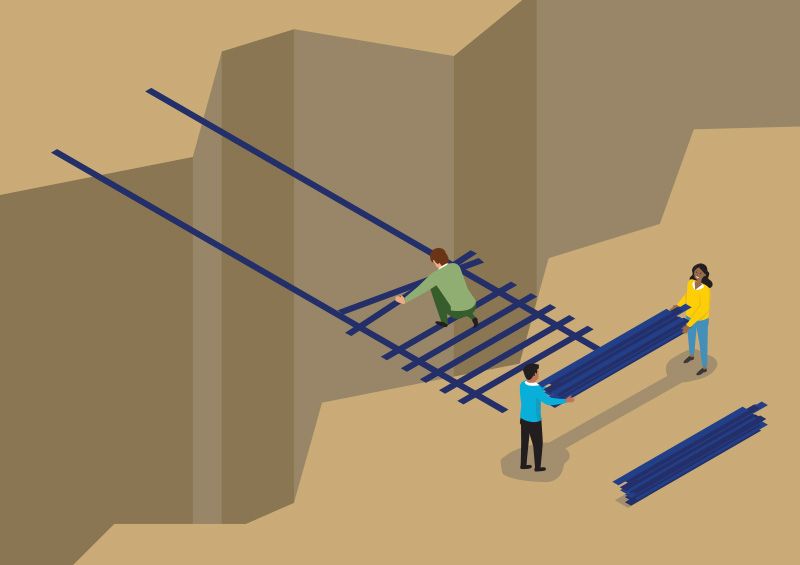
Organizational shift
In this way, an open adoptions philosophy is about more than adoptions and can represent a profound shift in workplace culture.
“It starts with leadership,” Ocaño says, and encompasses everything from how performance reviews are conducted to the types of training offered.
At Best Friends, he says, “every month we have a 30-minute conversation on how to build trust and how to forgive at work. It’s not, ‘Today let’s talk about your smart goals.’ No, it’s ‘Let’s talk about trust.’ It’s bringing a real human emotional intelligence component to this work.”
Without guidance on these issues, it’s all too easy for team members to cling to unhealthy, counterproductive coping strategies, such as blame and misanthropy.
Early in his sheltering career, Ocaño attended veterinary technician school and absorbed the message from one of his teachers: “She would say animals are a privilege, not a necessity; only some people are worthy of adoption. It’s crazy, but I really thought that was true.”
He continued to hold to that belief, even though he came from a neighborhood that local shelters and rescues unfairly mistrusted, until the day a family he grew up with came to the shelter wanting to adopt. “I thought to myself that under normal circumstances, I’d deny them, but I know they’re good people. That’s when I realized that I can’t rely on knowing people. I have to assume positive intent.”
Maintaining that mindset took conscious effort and a lot of soul-searching, but in the end, it released him from “white-knuckling this false truth that people are bad and my job is to protect animals from them.”
Clare Callison, Maddie’s canine lifesaving adviser at American Pets Alive!, experienced a similar epiphany while working as an adoption counselor at a municipal shelter in Texas where the prevailing attitude was that people coming in to adopt “have horrible intentions, and it’s our job to get to bottom of it.”
After reading about open adoptions and “zone of control” thinking, Callison went from “beating herself up” whenever an animal was returned to realizing that there was no question she could ask that would guarantee a successful adoption. By accepting that reality and focusing instead on the joy she brought to adopters, the pressures of her job eased.
She shared her philosophy while training new hires; not only did adoptions increase, but she says the overall vibe at the shelter became more positive and inviting to the public—and this held true even when a potential adopter left empty-handed.
Open adoptions isn’t about “giving away animals for free willy-nilly,” Hamrick says. The conversational approach enables adoption counselors to make better matches, even if that means referring someone to another organization when you don’t have, for example, that family-friendly small dog they’re looking for.
It also makes it possible to deliver rejection in a kind and constructive way. During the rare times Callison denied an adopter, she provided information about pet care and a parting message of “come back to us when XYZ is in place,” she says. “It doesn’t have to end badly.”
Ocaño agrees, noting that at its essence, an open adoptions policy is about kindness—“kindness to yourself and kindness to others. You can’t be kind and be denying all these people arbitrarily.”
“I thought to myself that under normal circumstances, I’d deny them, but I know they’re good people. That’s when I realized that I can’t rely on knowing people. I have to assume positive intent.”
—José Ocaño, senior director of people and culture with Best Friends Animal Society
Making the leap
It’s been more than 30 years since I visited a shelter with my friend and got my first taste of the adoption experience from an outsider’s viewpoint. By the skin of our teeth, we walked out that day with a dog, but we never revisited that shelter.
Jordan turned out to be an affectionate, sunny-natured soul who pranced like a pony when excited. He lived to age 17 and features prominently in my photo albums from that period: Jordan lounging on a couch, hiking in the mountains, peering out from hotel balconies on beach trips, romping with the other dogs that I and my other friends adopted over the years.
He’s a reminder of my tumultuous 20s, a time when neither I nor anyone in my friends circle would have passed any rigorous adoption screening. Our lives were marked by frequent moves, job changes, dramatic breakups and reconciliations, and borrowing money from one another to keep the utilities from being turned off.
But we all had beloved rescue animals, and somehow we managed to give them happy, stable and—through a combination of credit cards, personal loans and veterinarians who accepted post-dated checks—healthy lives.
It’s something I think about regularly, because even though I’ve since adopted out hundreds of animals as a shelter and rescue volunteer, I still find adoptions stressful.
Part of this I chalk up to a naturally anxious personality, a fear-mongering brain that will conjure up a dozen worst-case scenarios in the space of a single conversation with a potential adopter. Part of it, I feel, is just the nature of the game. After all, I’m facilitating the union of two unpredictable factors—animals and people.
Over the years, I’ve learned to put my fears aside and remember that of few adoptions I’ve done that didn’t work out, nearly all of them involved the “good on paper” adopters, not the people I was on the fence about. I remind myself that animal welfare is a collective effort, and the way I treat a potential adopter could determine whether they become lifelong supporters of the cause.
Without a crystal ball or the ability to peer into people’s hearts and minds, adoptions will always require me to make a leap of faith. And with only rare exceptions, people repay that trust.
More than repay it, in fact. Because for the handful of people who have disappointed me over the years, many more have gone to great lengths for the animals I entrusted to their care. I’ve unknowingly adopted heartache and high veterinary bills to people in the form of pets who developed serious medical issues, including kittens with feline infectious peritonitis and dogs with degenerative disc disease. I’ve placed animals with a range of less serious (but still frustrating) problems: dogs with leaky bladders, cats with less-than-perfect litter box habits, kittens with ringworm that, it turned out, hadn’t been cured. And their people stuck by them.
So I go into each adoption journey knowing that an irrational inner voice will demand absolute certainty that the animal I’m about to part with will never know a moment’s pain or distress in her life. As if I could guarantee that for my own pets.
And then I take a deep breath and remind myself that just as I’m taking a leap of faith every time I hand over that leash or carrier, the adopter is making a leap of faith, too.
